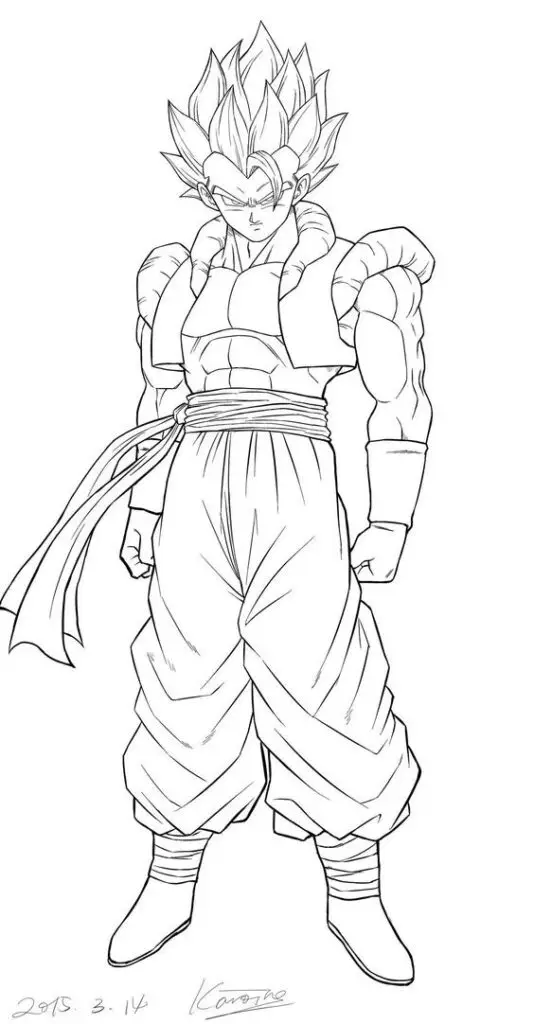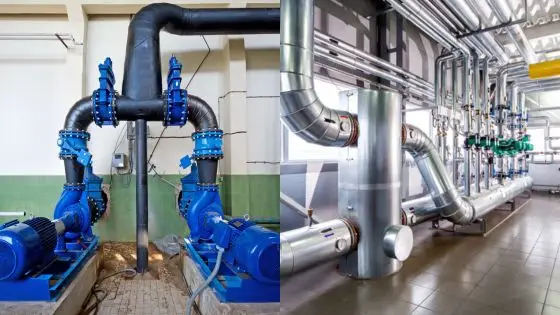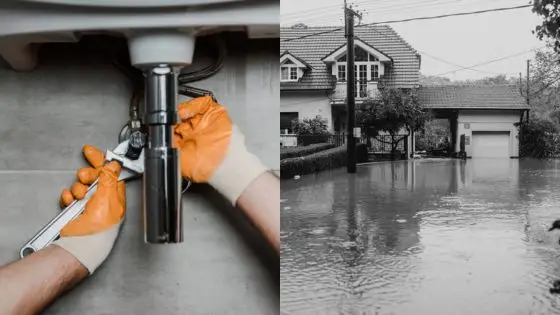Goku stands as one of the most iconic characters in anime history, making him a popular subject for artists and fans alike. Learning to draw Goku requires understanding his unique features, from his spiky Saiyan hair to his muscular physique and signature facial expressions.

Drawing Goku lets artists explore different styles and techniques while practicing fundamental art skills. His character design has evolved throughout Dragon Ball’s history, offering plenty of variations to practice with.


Artists can start with basic shapes and build up to more complex details, making Goku an excellent subject for both beginners and experienced illustrators. His dynamic poses and transformations provide endless opportunities for creative expression.
Key Takeaways
- Basic shapes and proportions form the foundation for creating accurate Goku drawings
- Mastering facial expressions and hair details brings Goku’s character to life
- Practice with different poses and power levels helps develop dynamic artwork skills
Goku Drawing Essentials

Creating an accurate drawing of Goku requires attention to his iconic design elements and careful selection of art supplies. Getting the details right helps capture his strength and personality.
Understanding Goku’s Character Design
Goku originated in Dragon Ball as a playful martial artist with Saiyan heritage. His design evolved throughout the series while maintaining core visual elements.
His facial features express determination and innocence. The eyes are large and angular, with defined brows that show emotion.
Dragon Ball’s art style uses clean lines and dynamic poses to showcase martial arts action. Goku’s poses often display power and confidence.
Key Features of Goku’s Appearance
Goku’s spiky black hair stands upright in distinct pointed sections. The hair pattern remains consistent even during movement.
His muscular physique shows well-defined muscles without being overly bulky. Key areas include:
- Defined chest and shoulders
- Clear arm muscle separation
- Six-pack abs
- Strong leg muscles
The orange gi uniform fits close to his body with blue undershirt, wristbands, and boots. The clothing shows natural folds and wrinkles during action.
Materials and Tools for Drawing
Basic supplies needed:
- HB and 2B pencils for initial sketching
- Fine-point markers (0.3mm – 0.5mm)
- Quality drawing paper
- Kneaded eraser
Start with light pencil lines to block out proportions. Use markers for clean final lines and details.
Reference images help maintain accuracy. Keep multiple angle views of Goku nearby while drawing.
A light table or tracing paper aids in practicing proportions and poses.
Step-by-Step Drawing Tutorials

Drawing Goku requires careful attention to his distinctive features, muscle structure, and the dynamic energy he brings to Dragon Ball Z. These techniques will help artists create an accurate representation of this iconic character.
Basic Goku Sketch
Start with basic shapes to build Goku’s framework. Draw a circle for his head and add the center guideline for facial features.


Mark the jawline with angular lines extending from the circle. Goku’s hair needs multiple spiky sections pointing upward.
Create the body structure using simple geometric shapes. A rectangle forms the chest, while cylinders work well for arms and legs.
Key proportions:
- Head is 1/6 of total body height
- Shoulders span 3 head-widths
- Arms reach mid-thigh level
- Legs make up half the body length
Adding Details and Musculature
Focus on Goku’s distinctive facial features. Draw large eyes with sharp edges and thick eyebrows. Add his small nose and determined expression.
Define major muscle groups. Emphasize the trapezius, deltoids, and pectorals. Create clear separations between muscle sections.
Draw his signature orange gi with blue undershirt. Add wrinkles where the fabric bunches at movement points.
Mark the belt knot at the waist. Include wrist bands and boots with the proper design elements.
Finalizing with Shading and Textures


Add base shadows to define muscle depth. Place darker shading under the pectorals and around the abdomen.
Create highlights on the hair spikes. The hair should have sharp, clean edges with darker sections near the roots.
Apply texture to the gi fabric. Add small lines to show cloth grain and movement patterns.
Use cross-hatching for deeper shadows. This technique works well for muscle definition and clothing folds.
Goku’s Hairstyles Through the Series

Goku’s iconic hair has become a defining feature of Dragon Ball’s visual style, starting with his distinctive black spikes and evolving through multiple Super Saiyan transformations.
Classic Goku Hair
Goku’s base form features jet-black hair with seven prominent spikes that point in different directions. This unique style remains unchanged from childhood through adulthood, defying gravity due to his Saiyan genetics.
The spikes create a palm tree-like pattern, with four large spikes sweeping upward and three smaller ones framing his face. His hair maintains this exact shape even after intense battles.
Dragon Ball creator Akira Toriyama designed Goku’s hair to stand out among other characters while being simple enough to draw consistently in action scenes.
Super Saiyan Transformations
The Super Saiyan form dramatically changes Goku’s hair color from black to bright gold. His spikes become more pronounced and rigid, standing up even higher than his base form.
Key Super Saiyan Hair Changes:
- SSJ1: Golden spikes with a slight upward lift
- SSJ2: Sharper golden spikes with bio-electricity
- SSJ3: Extremely long golden hair reaching past his waist
- SSJ God: Returns to base style but becomes bright red
- SSJ Blue: Maintains base style with electric blue coloring
Each transformation keeps the same basic spike pattern while adding unique elements to signify increased power levels.
Facial Expressions and Emotions

Drawing Goku’s facial expressions brings his character to life and shows his personality through detailed emotional art. Strong expressions capture his fighting spirit and gentle moments.
Capturing Goku’s Range of Emotions


Goku displays intense determination during battles with furrowed brows, gritted teeth, and focused eyes. His signature battle cry features an open mouth with visible teeth and tense facial muscles.
His cheerful side shows through wide eyes and a big, carefree smile that reaches his cheeks. Artists emphasize his innocence with rounded, soft features when he laughs or feels happy.
Serious moments require narrowed eyes, a firm mouth, and defined creases around his brows. These features communicate focus and resolve before major fights.
Expression Details for Impact
Key details like wrinkles around the eyes and mouth create authentic expressions. The angle of Goku’s eyebrows – from relaxed to sharply angled – signals his emotional state.
Drawing his hair spikes with more movement and energy enhances dramatic expressions. Artists add motion lines and sweat drops to emphasize intense feelings.
The size and shape of Goku’s eyes change to match his mood – from wide and innocent to sharp and focused. Small details like tear ducts and eyelid creases make expressions more realistic.
Advanced Techniques for Experienced Artists

Professional artists employ specific methods to capture Goku’s raw power and intense energy in their artwork. These advanced approaches focus on dynamic movement and the distinctive visual effects that define Dragon Ball’s iconic style.
Dynamic Poses and Action Scenes
Mastering the art of muscle definition requires careful attention to anatomical structure during movement. Artists should emphasize key muscle groups that show tension during fighting stances.
Bold lines and sharp angles help convey explosive movement in battle poses. The limbs’ positioning must follow natural flow lines while maintaining Dragon Ball’s signature style.
When drawing the Super Saiyan form, artists need to capture the intensity through exaggerated muscle definition and powerful stance choices. The body should appear larger and more defined than in base form.
Lighting and Energy Effects


Energy effects require layered techniques to achieve depth and luminosity. Start with a base glow, then add concentrated light sources at the hands and aura points.
Ki blasts and auras need varying levels of opacity. The center should appear most intense, with lighter edges that blend into the surrounding space.
For Super Saiyan transformations, the golden aura demands careful highlighting and shadow placement. Create lightning effects around the body using short, sharp strokes that point outward from the figure.
The hair requires special attention during power-ups. Use upward-flowing lines and add small energy sparks to show the intense energy coursing through each spike.
- 487shares
- Facebook0
- Pinterest486
- Twitter1


